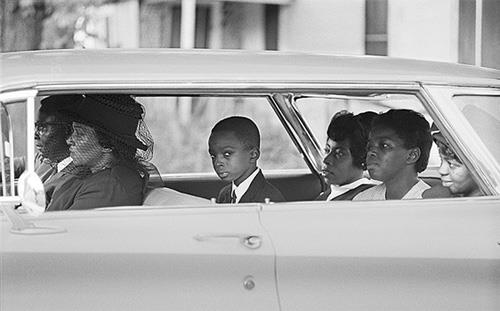
The point of driving is to get you somewhere.
The point of Driving While Black: Race, Space and Mobility in America, which airs Tuesday at 9 p.m. ET on PBS (check local listings), is to show the viewer how the American "crime" of driving while Black reflects a greater and deeper fear felt by Black drivers since before there was an America.
Over the last few decades, the phrase "driving while Black" has become the quintessential bitter joke. It suggests, with considerable data to reinforce the point, that Black drivers are stopped in disproportionate numbers by the police and harmed in disproportionate numbers after they are.
It's a manifestation of racial profiling, which ripples through the whole of American society and seems particularly glaring every time a Black motorist is pulled over on "suspicion" that would never have been aroused by a White motorist in the same car in the same place.
Driving While Black is largely adapted from the book of the same name by historian Dr. Gretchen Sorin, who produced the TV documentary along with Ric Burns.
Sorin, who serves as one of several on-camera narrators throughout the two-hour show, digs into the historical factors that underpin the syndrome.
That includes such seemingly tangential matters as the suburbanization of America in the 1950s when airy homes outside the cities became the new Mecca.
To live in the suburbs required a car since you could no longer walk to the grocery store. So when Black people joined the suburban march, they began to drive more. And since they weren't really welcome, the police found Black drivers "suspicious" more often.
That sort of profiling was often subtler than earlier versions, like when police would pull Black motorists over to warn them they had best not be anywhere in sight when the sun set.
Those who disregarded the warnings sometimes faced brutal consequences, a fact Sorin uses to tie the targeting of Black motorists to the targeting of Black people in general for doing anything. Looking at a white woman. Walking into the wrong restaurant. Just being seen as "uppity."
Truth is, Sorin says, the roots of "driving while Black" lie almost 300 years before the invention of the automobile when the white power structure began attempting to restrict the movement of slaves.
Mobility was an integral component of freedom – for slaves, literally, and many years later for motorists.
In either case, strong forces sought to impede or prevent that movement, and the echo of those forces still resonates in "driving while Black" stops today.
Driving While Black spends considerable time on The Green Book, the invaluable road guide that told Black motorists where they could obtain food, lodging, gasoline, and other amenities that White travelers could get anywhere.
It also notes that the Civil Rights Act of 1964, widely and correctly hailed as an instrument of liberation, had the unintended consequence of putting many of the Green Book entities out of business. Once Black motorists could patronize chain motels, they stopped needing the small Black inns and rooming houses that had previously been their only option. This weakened Black communities.
So there are nuances here. But the basic message of Driving While Black leaves few shades of grey. It declares that the justifiable fear felt by Black motorists for the last century reflects a greater fear that almost anywhere, skin color alone can still make a person a more likely target and victim.
Victor Green, who created The Green Book, said he hoped it would not be necessary one day.
Whoever first came up with the dark humor of the phrase "driving while Black" very likely hoped that one day no one would get it.